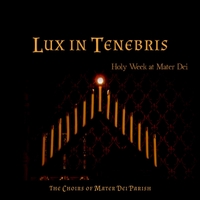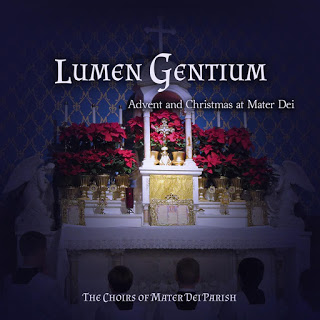The gradual for the Feast of Our Lady of Guadalupe is a poetic metaphor of the glories of Mary.
Quae est ista quae progreditur quasi aurora consurgens, pulchra ut luna, electa ut sol? Quasi arcus refulgens inter nebulas gloriae et quasi flos rosarum in diebus vernis.
Who is she who rises like the coming of the dawn, beautiful as the moon, bright as the sun? As the rainbow spreads light among the clouds of glory and as as the flower of roses in the days of spring.
Gradual for Our Lady of Guadalupe (partly from Canticle of Canticles 6:9, partly from Ecclesiasticus 50:8)
Setting in Two Parts
Recently, I have been writing two and three part motets for my parish’s women’s schola and girls’ choir — some of them intended as simple introductions to sacred polyphony for young girls. Among these is a setting of this beautiful text. It seems even eight parts would be too few for such a text, but I have set it to only two.
Lacking a third line, we never have a full triad except at the split at the end. I concentrated on melody and word painting, hoping that the listener’s ear would infer the harmony from that context.
As usual, the score is available for free download below, licensed under Creative Commons. I hope it may be of use.
Reflection
Consider that the words of this gradual are metaphorical. The coming of dawn, the beauty of the moon, and the brightness of the sun are merely the objects we have before us to estimate the glory of Our Lady. They are the metaphors that point to a greater reality. In contrast, Shakespeare’s poetic description of Juliet through the eyes of Romeo (But soft! What light through yonder window breaks? It is the East, and Juliet is the sun.) seems mere hyperbole to me. Juliet is like the coming of the sun in Romeo’s eyes; but in reality, Juliet does not radiate as the sun or rise as the dawn, except perhaps in Romeo’s infatuated imagination. Yet, in the case of Mary, it is the sun, the moon, and the dawn that do not adequately estimate her glory.
If these are the metaphorical objects we have for the glory of Mary, to what, then, can we compare the glory of the Blessed Trinity?
Related Compositions
About the Featured Image
The featured image is of the tilma of St. Juan Diego. The image is in the public domain in the United States, according to wikimedia.





